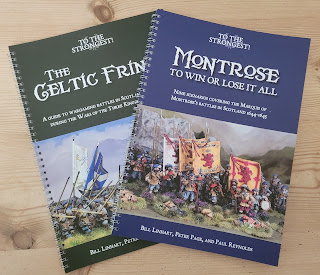Coventry
When one thinks of Coventry, one thinks it is part of the general industrial sprawl that is the West Midlands; and a city that got flattened by the Luftwaffe during the Blitz. This does Coventry a massive disservice.
Coventry was described as having 12 gateways and 32 towers; although this would appear to have been 20 individual towers and 12 gateways (with towers). This is backed up by Speed's 1610 map of the city.
The city had a strong affiliation with the crown, but when Charles I requested the tax known as "ship money" in 1635, protests broke out. By the time war had been declared the city was firmly in the camp of Parliament.
In August 1642, Charles attempted to take the city with 6000 horse, but they were no match for the 1500 defenders and the city walls. The siege was quickly abandoned.
Coventry became a garrison town, and was largely untroubled by the King's men for the duration of the wars.
In 1648, the Scots were defeated at Preston, and many of their men captured. These men were marched the length and breadth of the country prior to deportation and indentured servitude in the New World. Many Scots prisoners were held in the church of St John The Baptist. The church would then be used as a stables and as market before being restored as a place of worship in the 1740s
There are many theories as to the origin of the phrase 'being sent to Coventry', one of the more likely hypotheses comes from Edward Hyde, 1st Earl of Clarendon in his work The History of the Great Rebellion in the late 1660s. He argued that the phrase came from the response from the people of Coventry to the Scots prisoners - the citizens ostracised and ignored the prisoners.
Roll on to 1662, Charles II has been restored to the throne, and he has many scores to settle. As a consequence of Coventry's support for Parliament Charles ordered the city walls to be levelled.
Fast forward to November 1940 and the now engineering centre that was Coventry suffered heavily during Luftwaffe bombing raids. Most notably the destruction of the medieval cathedral. The pock marks on the side of the cathedral aren't the result of musket balls, and cannon shot - it's shrapnel from the bombing raids. The shrapnel scars are so numerous, they give the buildings around Berlin's museum island a run for their money.
A Coventrian writes: throw into the mix Coventry City Council who had started clearing medieval Coventry in the 1930's; they picked up the baton in the 1950s, using the wartime bombing as a smoke screen to continue their plans for 'modernisation'.
What's There Now?
Herbert Art Gallery has a large collection of seventeenth century pottery.
The town walls still exist in places: most notably Swanswell Gate
...and Cook Street Gate.
A number of medieval buildings survived the Blitz and provide inspiration for modelling buildings and terrain.
Ford's Hospital,
and Bond's Hospital still operate as almshouses. Dr Who fans may recognise Ford's Hospital as it appeared in an episode featuring the tenth Doctor. Please be respectful when visiting these beautiful buildings.
22 Bayley Lane dates from 1500.
St Mary's Guildhall, built in the 1340s.
Golden Cross Inn, dating from 1583 is a typical three storey jettied Tudor-style inn.St John the Baptist, founded in 1344, the contents are mostly Victorian.
Upper Spon Street - is a street of late medieval houses.
Postcodes for SatNavs























Fascinating and as well researched as ever. I did not expect to find a reason for a weekend in Coventry today! Now to sell the idea to the missus...
ReplyDeleteWorth a visit, but a weekend? Think you're pushing your luck there. If she does go for it, she'll dismiss your ideas out of hand. Forever. And, of course, remind you what a bad idea it was, at every opportunity.
DeleteStay in nearby Warwick instead. Have a detour to Coventry for a couple of hours instead.
Wonderful buildings- very inspiring for those of us who like to include them in our games.
ReplyDeleteAgreed, they really are stunning, and good inspiration
DeleteI've spent a fair bit of time in Coventry, I like the modern cathedral that falls outside your remit, in addition to the splendid medieval buildings and of course great curries!
ReplyDeleteBest Iain
I expect I shall see quite a bit more of Coventry over the coming years as #2 son is off to 'do' engineering there.
Delete